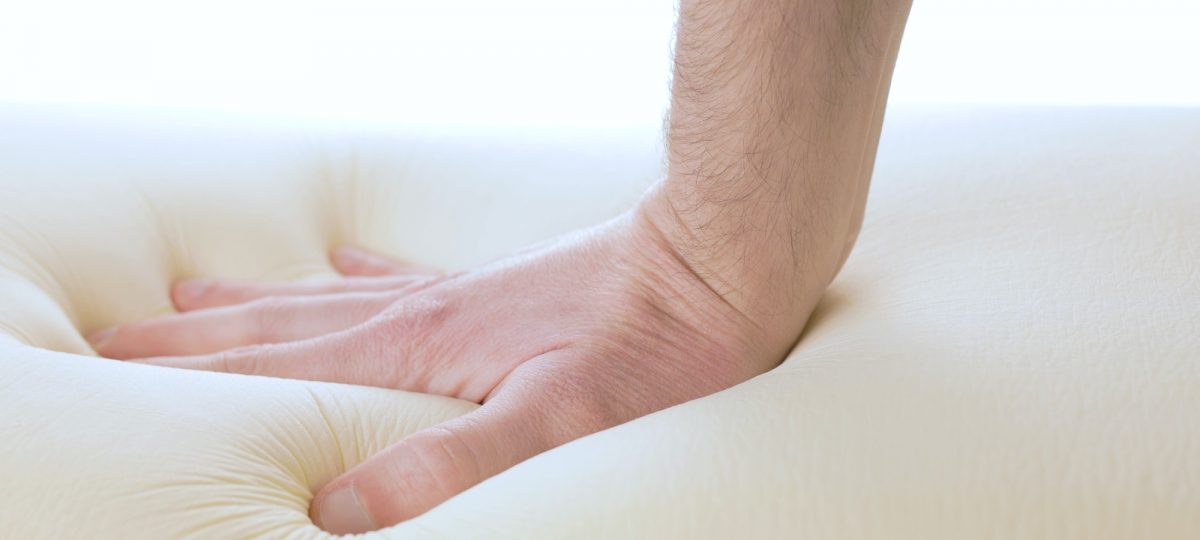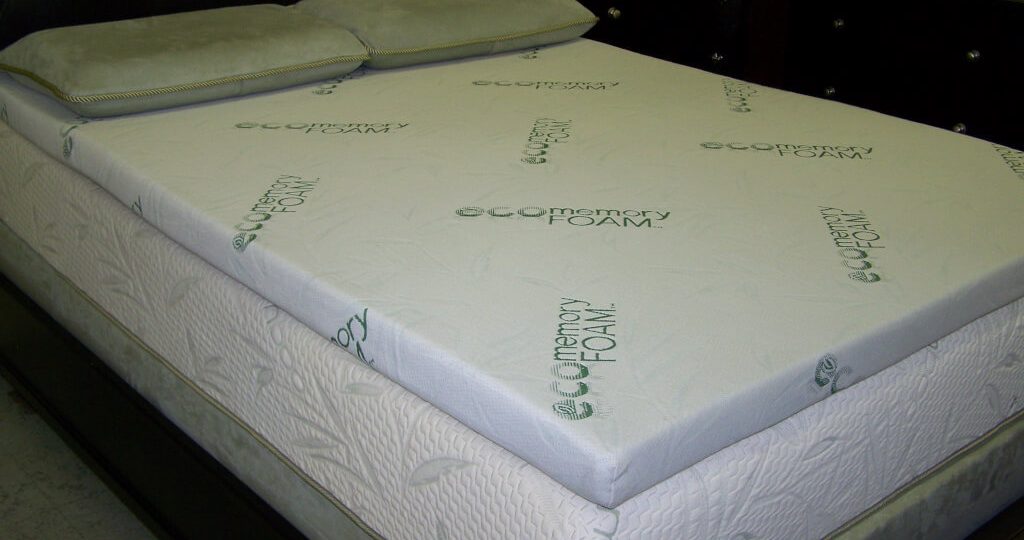Every purchase made online is encrypted with a high level of security you’ve come to expect. Your private information is never shared nor sold, so you can buy with confidence. You can also visit our store if you are in the St. Louis area.

Table of Contents
Why Are Foam Mattresses Used And What Is Initial Force Deflection
Estimated reading time: 7 minutes
Table of contents
Because good foams can be extremely durable and comfortable. All foams are NOT created equal. In fact, here in St. Louis, there was a retail store called Famous Barr. A department store that was eventually bought out by Macy’s Department Store. In the 1970s through the very early 1990s, Famous Barr sold some of the finest mattresses ever built. Sealy and Stearns and Foster to name a few. They were comfortable and supportive and their comfort and support lasted for 10-15 years or more.
In our opinion, today’s versions of most brand-name mattresses are but a fraction of the quality they once were. The mattresses of the past didn’t have problems like a premature breakdown. We call this problem a body impression, it is a permanent silhouette of your body that is indented into the many layers of cheap foam and padding used to build these new mattresses.
What Can You Do About Body Impressions In Your Mattress?
Educate Yourself: Learn how these products are built and where manufacturers cheat you so you don’t get burned.
- Buy a mattress with better quality foam.
- Buy a mattress with more total steel.
- Buy a mattress with a high-quality foundation.
- Buy a mattress with 2 sides.
Density And ILD For Foam, What They Mean
It is very important to be able to choose a quality mattress, but how do we determine what the differences are between all the components used to build that mattress. Foam is the key ingredient for comfort and durability, but do you know how to tell the difference in the layers of foam? Simply looking at a mattress will not give you any clues. There is a running joke in the industry that mattresses are all just big white rectangles and that simply looking at them will not divulge the answers.
So, how can you distinguish the difference in ingredients between a cheap mattress that uses the poorest quality foams and a high-end mattress even though they may look identical? Price doesn’t necessarily reveal the recipe or makeup of a mattress. Doing your homework can get you what you expect for the price you pay. Remember the old adage are you getting the sizzle or are you getting the steak?
We are going to talk about mattress industry-related terms like Indentation Load Deflection (ILD) and Indentation Force Deflection (IFD). These are similar acronyms that really mean the same thing. You will also learn about foam density. Completely different than the two previous acronyms mentioned above.
Are IFD And ILD The Same Thing?
Yes, they are in essence the same thing. ILD Indentation Load Deflection was the original name and later was substituted for the acronym IFD which is more commonly used today and stands for Indentation Force Deflection. The IFD or ILD ratings for flexible foams range from a super soft 10 to a semi-rigid 80.
Is Foam Density And IFD The Same thing?
No, Density is the measurement of weight taken on a 1 cubic foot piece of foam but is commonly confused with IFD
Technical lingo is boring, but it doesn’t make it unimportant. These fancy words and acronyms do not tell you by themselves the comfort of the foam. The fact that we add other ingredients to a mattress like base foams, springs, fiber, quilting, and fabric means the element of the foam’s feel can be changed dramatically. However, the foam’s durability and overall comfort, and level of support can give us a better understanding of IFD / ILD
IFD is one of many factors to take into consideration while shopping for a new mattress, whether it is constructed using polyurethane or memory foam. If you are looking at these two different types of foams, they all pretty much look the same. Each is available in countless IFD variations. If you were to take a more scientific approach and measure these frequently used foam mattress paddings, you will see that there are some really major differences in foam. These measurable differences give you a way to compare
Why Is Initial Force Deflection Or IFD important?
As you can see firmness measurement directly relates to the feel you will experience on your new mattress, sofa, or chair, etc. It gives the shopper a way to distinguish a measurable dissimilarity between two pieces of foam.
So What Is Initial Force Deflection Or IFD?
The straightforward answer is that it is the measurement of a firmness taken on a piece of foam. The foam is usually polyurethane foam or memory foam.

How Does IFD / ILD Rating Effect Mattress Feel?
ILD / IFD is essentially an industry firmness scale of measurement. The lower number the softer the foam. The higher the number the firmer the foam. See scale below.
- 6–12 IFD / ILD Pillows.
- 12-18 IFD / ILD Firmer pillows, soft surface padding. Envelops the body.
- 18-24 IFD / ILD Thin firm back pillows and cushioning, mattress tufting in the surface layer. Very cushy but not smothering.
- 24-30 IFD / ILD Relatively soft cradling quilt foam used in upper-middle and top layers of a mattress. Eases pressure of firmer base foams and coils without being too hard or too soft. Often described as a nice middle-ground for sleepers of average size.
- 30-36 IFD / ILD mattresses with less give. People who are looking for a gentle firm feel. Firm but with just a little give in the surface.
- 36-45 IFD / ILD Creates a very firm mattress feel. Often used for plus sizes, 250-350. Lbs. It is often as a base layer for memory foam. The bed is in boxes and on Bunkie boards as a foundation to support upper layers that are softer and cushioning. This is not used a surface layer in mattresses.
- 45+ IFD / ILD High impact shock-absorbing foam. Usually not used for mattress construction. Think carpet padding or packing foam.
- How is the Initial Force Deflection Measurement (IFD) taken?
Using a round disc measuring fifty square inches or eight inches in diameter, the disc is placed upon a measured block of foam usually four inches in thickness. The disc is then forced down into the foam block until the foam has been compacted down to Seventy- five percent of its original thickness. The sample block of foam having an original thickness of 4 inches will now only measure 3 inches. A measurement is then taken in pounds of force that is required to squash the piece of foam down to the standardized twenty-five percent.
Why Is High-Density Foam A Mattress Must?
Because mattresses of the past were built to last, they constructed beds only using high-density foams as mentioned above. Comfort and long-term durability were and are the result of incorporating high-density foams into mattress construction. High density is determined by the high weight of foam contained within 1 cubic foot of foam. Fewer air cells within that 1 cubic foot of space and more foam cells give the foam a more durable structure.

Foams with less overall foam and additional air incorporated within the cubic foot are considered less dense. The high amount of air cells within that structure is therefore unable to support the applied weight from sleeping on a mattress for 6-9 hours a night. Remember, this does NOT influence how soft or firm the mattress is. Density ONLY indicates quality and durability, NOT your comfort level. Manufacturers in the past would have used a foam density of around 2.5 pounds per cubic foot. Today these same manufacturers are using .8, 1.0 1.2, 1.4 in their standard polyurethane foam for mattress production.
There are many things that affect mattress feel; heat, humidity, density, IFD, ILD layering combinations, spring type, spring design, 1 sided, 2 sided, box spring, foundation, etc. Foam is just one ingredient in the mattress mix. Do not simply choose a mattress based on foam alone. The base is on quality ingredients that will serve up night after night of dreamy sleep.
Our Most Recent Blog Posts
Contact STL Beds Now
You can also contact us by filling out the form below. Make sure to fill in as many fields as possible so we can respond to you with the most accurate information!




